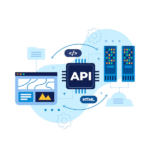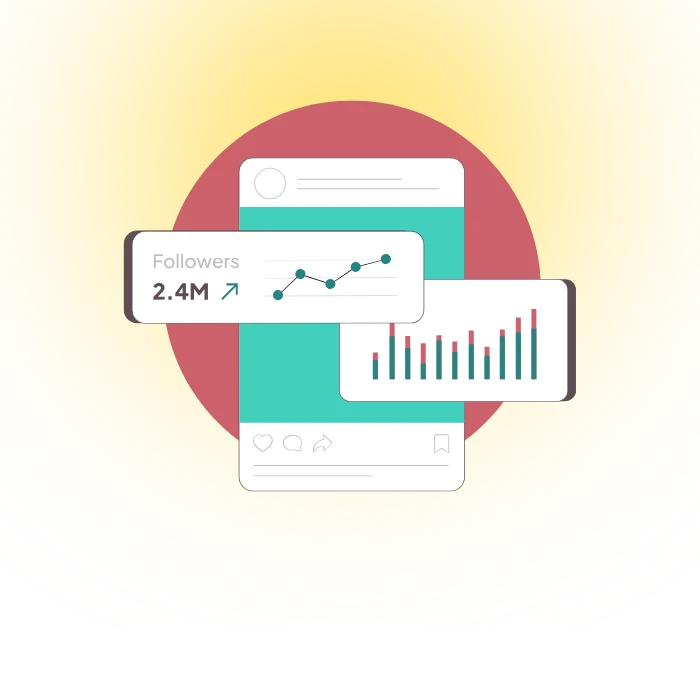Sometimes it feels like digital marketing and SEO campaigns are just throwing spaghetti at the wall, hoping something sticks. But what if someone can really tell which strands are holding on and earning money? That is where ROI comes into play. For businesses like Epistic, having a grip on ROI turns guesswork into strategy. This guide takes you through the limits of determining whether the ads, blogs, or keyword adjustments are really generating revenue or not. You know, a path to smarter spending and bigger wins online.
Whatever you do in ads, be it social or search engine optimisation, trying to figure out the ROI will really guarantee smart decisions. Let’s dive into what ROI is, why it matters, and the effective ways to do it for all your digital marketing and SEO campaigns.
What is ROI in Digital Marketing?
Return on Investment refers to the extent of profit generated from the marketing efforts compared to the expenses it has incurred. It is equivalent to checking if the money put into a vending machine earned a snack worthy of the cost. In digital marketing, ROI indicates if your campaigns-Google Ads, social media posts, SEO adjustments actually yielding more revenue than what they cost.
If Epistic spends $1,000 on a Google Ads campaign for $4,000 in sales, that would describe a positive ROI. What you want is for every dollar spent to be working to return more than a dollar for itself. Knowing your ROI will help you focus on areas that work and spend less on areas that don’t.
The Importance of Tracking ROI
Calculating an ROI? It’s not just about numbers-the marketing needs to become smarter. Here are some important reasons:
Shows Value: ROI demonstrates to your stakeholders-maybe your boss or investors-that your marketing budget is properly spent.
Serves as a Decision-Making Tool: In helping you decide what campaigns continue, are altered, or are discontinued.
Saving Money: When poor-performing campaigns can be identified, funds can be diverted to better-performing alternatives.
Growth Creation: Profit insight gives way to upscaling. At Epistic, we have witnessed companies transform their strategies by focusing on ROI. A practice like a GPS for marketing-keeping you on track.
The Basic ROI Formula
Calculating ROI is simpler than it sounds. The standard formula is:
ROI = (Net Profit / Cost of Investment) x 100
Here’s what that means:
- Net Profit: The revenue from your campaign minus the cost of running it.
- Cost of Investment: All expenses tied to the campaign (ads, tools, staff time, etc.).
- x 100: Turns the result into a percentage for easy understanding.
For example, if Epistic runs an SEO campaign costing $2,000 and it generates $10,000 in sales, the calculation looks like this:
- Net Profit = $10,000 (revenue) – $2,000 (cost) = $8,000
- ROI = ($8,000 / $2,000) x 100 = 400%
That’s a 400% ROI, meaning every dollar spent brought in four dollars in profit. Not bad, right?
Steps to Effectively Measure Digital Marketing ROI
Measuring ROI isn’t a one-and-done deal; it’s a process. Start with these steps to build a solid system.
Define Specific Objectives First
Goals set the stage. What does success look like? More website hits? Higher sales? Better engagement? Pin it down with SMART goals – Specific, Measurable, Achievable, Relevant, Time-bound.
For digital marketing, track metrics like conversion rates or click-throughs. In SEO, aim for top rankings on key terms. Epistic advises linking goals to business outcomes, like boosting quarterly revenue by 15%. Without clear targets, ROI becomes a moving target.
Account for Every Expense Involved
Costs sneak up if not watched. List them all: ad budgets, content creation fees, tool subscriptions, even agency retainers. For a social media campaign, add graphic design and promotion costs.
Epistic uses spreadsheets to log everything, ensuring nothing slips through. Overlook staff time? That skews results. Accurate cost tracking paints the true picture, avoiding inflated ROI figures.
Quantify the Revenue Attributed
Revenue tracking demands precision. Use analytics to link sales back to campaigns. E-commerce? Easy with transaction data. B2B? CRM systems track leads to closures.
Consider customer lifetime value too. A $100 sale might lead to $500 over time. Epistemic factors that in for fuller ROI views. If attribution gets murky, models like last-click or multi-touch clarify contributions.
Perform the ROI Computation
With numbers in hand, crunch them. Using the formula, calculate the percentage. Positive? Great. Negative? Time to investigate.
Epistic runs monthly checks, spotting trends like seasonal dips. Adjust accordingly – maybe amp up SEO during slow periods. Regular computation keeps strategies sharp.
Review Results and Refine Strategies
Analysis turns data into action. Which channels excel? SEO might outpace ads in longevity. Test variations, like new ad creatives, and measure impacts.
Epistic clients often see 50% ROI lifts from optimisations. It’s iterative: measure, tweak, repeat. Stay agile, and campaigns evolve with the market.
Diving Deeper into SEO ROI Measurement
SEO plays the long game, but its ROI can be massive. Unlike quick-hit ads, it builds momentum over months.
Unique Aspects of SEO ROI
SEO has lower costs up front, but greater patience is required. Once rankings begin to climb, organic traffic flows, and Epistic has seen a number of its clients’ experiences, literally, compounding returns on their previous investments in SEO, years after the fact.
The big challenges are, of course, delayed return and not an easy attribution. Tools make it doable, though, and we are on our way to turning SEO into a revenue-generating juggernaut.
Essential Metrics for SEO Success
Keep an eye on organic traffic with Google Analytics. Analyse keyword rank with Ahrefs. Other search results are important, but focus on conversions – sales, sign-ups.
Backlinks are indicators of authority. More is less; quality over quantity. Bounce rates give you an indication of content relevance.
That is where Epistic focuses on bringing a holistic picture.
How to Compute SEO-Specific ROI
Apply the standard formula, but spread costs over time. Example: $4,000 spent on optimisation yields $20,000 in organic sales over a year. ROI: (20,000 – 4,000) / 4,000 * 100 = 400%.
Factor in ongoing maintenance. Epistic tracks quarterly, adjusting for algorithm shifts.
Overcoming SEO Measurement Hurdles
Time lags frustrate, but set milestones like traffic benchmarks. Attribution? Use UTM tags. Non-monetary wins, like brand visibility, get estimated values.
Epistic uses custom dashboards to simplify, ensuring clients see progress clearly.
Assessing ROI in Paid Digital Campaigns
Paid campaigns, like Google Ads or social media ads, are easier to measure because results are immediate, and platforms provide detailed data. Here’s how to do it.
Key Metrics for Paid Campaigns
Focus on these metrics for paid campaigns:
- Click-Through Rate (CTR): The percentage of people who click your ad.
- Cost Per Click (CPC): How much each click costs.
- Conversion Rate: The percentage of clicks that lead to a desired action (e.g., a purchase).
- Cost Per Acquisition (CPA): The cost to gain a customer.
- Revenue: Total sales driven by the campaign.
For example, if Epistic runs a Facebook ad with a 2% CTR, $1 CPC, and 5% conversion rate, you can calculate how many customers and how much revenue it generates.
Calculating Paid Campaign ROI
Let’s say Epistic spends $1,000 on a Google Ads campaign:
- Clicks: 1,000 clicks at $1 each
- Conversions: 50 conversions (5% conversion rate)
- Revenue: 50 customers x $100 per sale = $5,000
- Net Profit: $5,000 – $1,000 = $4,000
- ROI: ($4,000 / $1,000) x 100 = 400%
If the ROI is lower than expected, try optimising ad copy, targeting, or landing pages.
Attribution Models for Paid Campaigns
Attribution helps us understand which ads drive sales. Popular attribution models include:
Last-Click Attribution: The Last ad clicked before a sale receives credit.
First-Click Attribution: The First ad a user interacts with receives credit.
Multi-Touch Attribution: Credit is divided across all touch points.
Epistic recommends multi-touch attribution for a full understanding (more important for complex customer journeys).
Tools to Help Measure ROI
The right tools make tracking ROI easier. Here are some favourites from Epistic:
- Google Analytics: Free and powerful for tracking traffic, conversions, and revenue.
- Google Ads/Facebook Ads Manager: Includes reporting for paid campaigns.
- SEMrush or Ahrefs: Excellent for SEO metrics, such as keyword rankings and backlinks.
- CRM Tools (e.g., HubSpot): Connect leads to sales for accurate attribution.
- Google Tag Manager: Makes setting up tracking codes for conversions simpler.
These tools help you gather data and calculate ROI without making guesses. Epistic uses them to provide clients with clear, actionable insights.
Tips to Improve Digital Marketing and SEO ROI
Want to boost your ROI? Try these practical tips:
- Target the Right Audience: Use precise targeting in ads and SEO to reach people who are likely to convert.
- Optimise Landing Pages: Ensure your website is fast, mobile-friendly, and has clear calls to action.
- Test Everything: Run A/B tests on ads, emails, and content to find what works best.
- Focus on High-Performing Channels: Focus on channels with the best ROI, like SEO for long-term gains or PPC for quick wins.
- Use Data-Driven Insights: Let tools like Google Analytics guide your decisions. Don’t rely on gut feelings.
- Invest in Quality Content: Blogs, videos, and guides attract organic traffic and build trust.
- Monitor Competitors: Tools like SEMrush show what competitors are doing, helping you stay ahead.
Epistic has seen clients double their ROI by focusing on these strategies. Small changes can lead to big results.
Emerging Trends in Measuring ROI
Digital marketing is a field that never stays the same. There are trends to pay attention to as we look towards 2025:
AI Analytics tools such as Epistic’s analytics platform use AI to not only predict ROI, but also optimise performance.
Privacy-First Tracking – Cookies are disappearing, and marketers will need to shift focus to first-party data collection (email sign-up, etc.) to accurately track results.
Video Content ROI – The video boom continues, and tracking engagement metrics such as watch time will help you understand how to estimate ROI.
Voice Search SEO – Voice search queries are happening all the time. Iff you want to capture traffic, you need to optimise the phrases people use (Ex, “best coffee near me”).
Keeping an eye on these trends will allow you to ensure you are measuring the right metrics for your ROI reporting!
How Epistic Can Help
At Epistic, we know measuring ROI can feel overwhelming. That’s why we offer tailored digital marketing and SEO solutions to simplify the process. From setting up tracking tools to optimising campaigns, we help businesses like yours maximise ROI. Our team uses data-driven strategies to ensure every dollar spent delivers results.
Ready to boost your ROI? Contact Epistic today for a free consultation. Let’s make your marketing work harder.
Wrapping It Up
Mastering ROI changes digital efforts. Set goals, track carefully, and improve continuously. Epistic is here to help. Whether SEO is driving organic traffic or paid ads are bringing quick sales, ROI allows you to make better decisions. Follow the steps in this guide, stay consistent, and watch your campaigns become profit machines.
With Epistic’s help, businesses can reach their marketing goals. Start measuring ROI today and gain control of your digital success.






